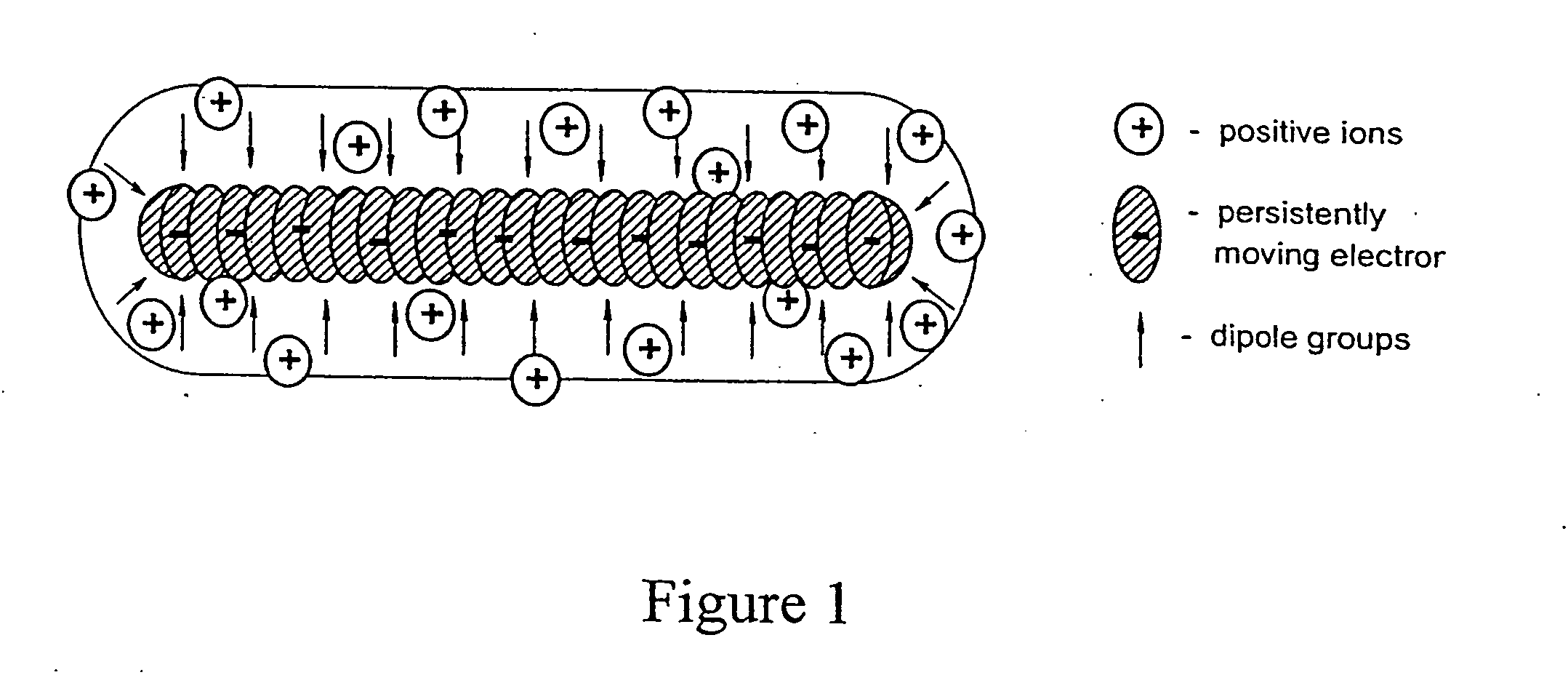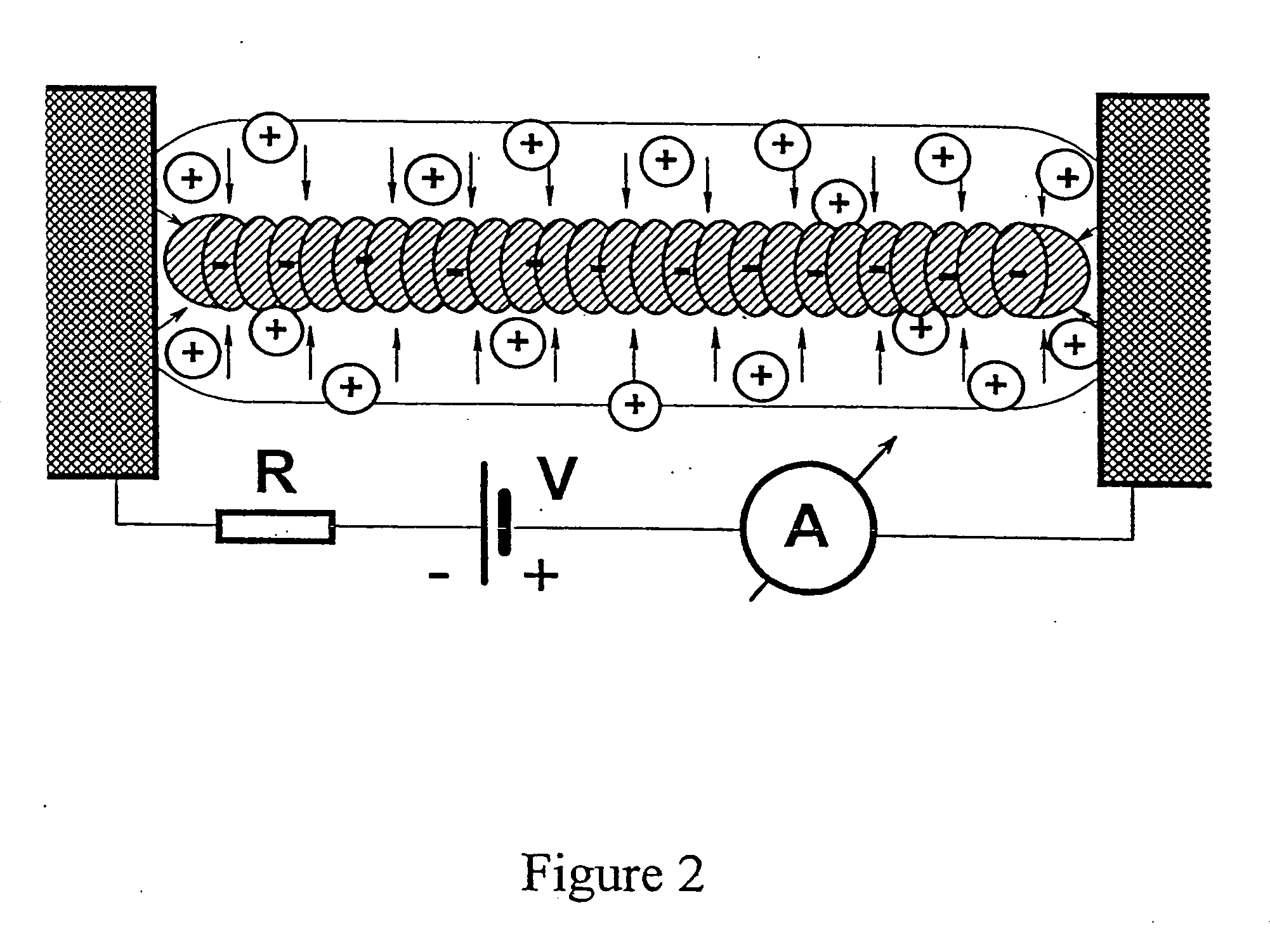Conductive polymer materials and methods for their manufacture and use
a polymer material and polymer technology, applied in the direction of non-metal conductors, magnetic circuits characterised by magnetic materials, conductors, etc., can solve the problems of low critical temperature of most metals, severe limits to the application of metal superconductors in room temperature applications, and substantial power losses, etc., to achieve low resistance electrical current, limited space and energy consumption, and high performan
- Summary
- Abstract
- Description
- Claims
- Application Information
AI Technical Summary
Benefits of technology
Problems solved by technology
Method used
Image
Examples
examples
In the examples that follow, the organic molecules by themselves are not highly conductive. Rather, the low and high molecular weight molecules remain in an insulating state. Instead, electron threads formed within such organic medium can be superconducting.
example no 1
Superconducting Nanowires in High Viscosity Poly(Dimethyl-Amino-Ethyl-Methacrylate)
To form a high viscosity medium containing superconducting nanostructures made in poly(dimethyl-amino-ethyl-methacrylate), the following series of steps were carried out. Each step comprises individual sub-steps as indicated.
Step 1: Forming a Liquid Medium Comprising a Macromolecular Substance and a Dopant
(a) A two gram sample of poly(dimethyl-amino-ethyl-methacrylate) having a mean molecular weight of 100,000 atomic mass units (amu) was dissolved in 8 grams of the toluene to create a solution having about 20 weight % polymer. This solution was transparent and had no color. Toluene has very little, if any, polarity. The polymer has both amino groups and ester groups each having high dipole moments. One drop of this solution was taken to analyze its magnetic properties.
(b) A small open flask containing the solution formed in step (a) was heated to a temperature of 65-70° C. for 15 min. During t...
example no
Superconducting Nanowires in Other Copolymerized Polymers
In Example No: 4, the co-polymer used comprises links of dimethylaminoethyl-methacrylate (or dimethyl aminoethyl-acrylate) and links of hexylacrylate. The formation of nanowires takes place even if the content of hexylacrylate links exceeds 80%.
The material obtained in Example No: 4 differs from previous ones in two respects: a) it is amorphous, and b) At Q>80% it has a glass transition temperature below room temperature. Therefore, at room temperature it is a liquid, not a solid, and therefore has no Young's modulus.
A feature of the manufacture of certain quantum nanowires made at low concentrations (<5 weight %) of macromolecular substances in solution can be that the concentration of free electrons generated may not enough to form numbers of quantum nanowires sufficient to be detected with a magnetometer.
Therefore, at least one of the following methods can be used to increase the concentration of free electrons...
PUM
| Property | Measurement | Unit |
|---|---|---|
| ionization potential | aaaaa | aaaaa |
| critical temperature | aaaaa | aaaaa |
| conductivity | aaaaa | aaaaa |
Abstract
Description
Claims
Application Information
 Login to View More
Login to View More - R&D
- Intellectual Property
- Life Sciences
- Materials
- Tech Scout
- Unparalleled Data Quality
- Higher Quality Content
- 60% Fewer Hallucinations
Browse by: Latest US Patents, China's latest patents, Technical Efficacy Thesaurus, Application Domain, Technology Topic, Popular Technical Reports.
© 2025 PatSnap. All rights reserved.Legal|Privacy policy|Modern Slavery Act Transparency Statement|Sitemap|About US| Contact US: help@patsnap.com



